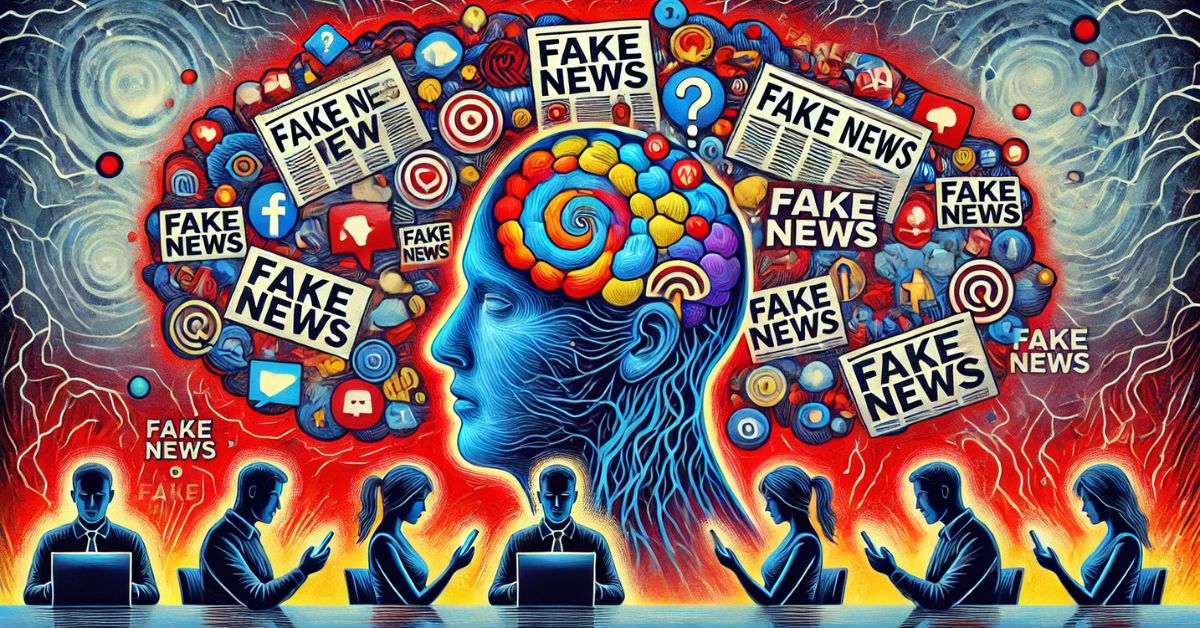The Psychology of Fake News: Why People Believe Lies Online

In 2016, during the U.S. presidential elections, a completely false story spread like wildfire on social media. It claimed that a child trafficking ring linked to top politicians was operating out of a pizza restaurant. Despite having no evidence, the so-called Pizzagate conspiracy convinced thousands of people. One man even entered the restaurant with a gun, believing he was rescuing children. This incident shows how fake news can shape beliefs and push people into making irrational decisions. But why do people believe fake news, even when facts prove otherwise? The answer lies in how our minds work.
One of the biggest reasons people fall for fake news is that we tend to believe information that aligns with what we already think. This is called confirmation bias. If someone already holds strong political opinions, they are more likely to accept false information that supports their viewpoint. During the COVID-19 pandemic, for example, many people believed news that claimed masks were harmful. They weren’t necessarily looking for the truth but for something that validated their existing doubts about safety measures. This is why even the most ridiculous claims can seem believable to those who want them to be true.
Emotions also play a huge role. Fake news is often designed to trigger anger, fear, or excitement. When we feel strongly about something, we tend to react quickly rather than think critically. Imagine scrolling through social media and coming across a headline that says, "Government secretly planning to ban all social media next week!" Your immediate reaction might be panic, frustration, or even anger. Instead of taking a moment to verify the claim, you might instantly share it with friends, unknowingly spreading false information. This is how fake news thrives—it gets people to act on emotion before they can analyze the facts.
Another psychological trick that makes fake news powerful is repetition. The more we see or hear something, the more likely we are to believe it. This is known as the illusion of truth effect. Even if something is completely false, seeing it multiple times makes it feel familiar, and familiarity creates a false sense of credibility. This is why platforms like WhatsApp and Facebook play such a big role in spreading misinformation. When a piece of fake news is forwarded again and again, it starts to feel like common knowledge, even when there’s no evidence to support it.
People also tend to believe something simply because others believe it. This is called social proof. If an article gets thousands of likes, shares, or comments, it creates an illusion that the information must be true. Most of us don’t have the time or patience to fact-check everything we see online. We assume that if so many people are talking about it, it must have some truth to it. But fake news takes advantage of this, spreading falsehoods that gain popularity just because they are widely shared.
The internet has made information more accessible than ever, but it has also created an environment where misinformation spreads just as easily. With so much content available, people often skim through headlines without reading full articles. Clickbait titles grab attention, and false information spreads quickly because people don’t take the time to verify what they read. In an age of constant notifications and social media updates, it’s easy to fall for misleading stories, especially when they confirm what we already believe.
So how can we avoid falling for fake news? The most important step is to pause and think before sharing anything. If something sounds shocking or extreme, it’s a good idea to check multiple reliable sources before believing it (Lateral Reading). News organizations like BBC, Reuters, local news wires or official government websites can help verify if a claim is real. Another good habit is to be cautious of overly dramatic language. Fake news often uses words like “shocking truth,” “exposed,” or “hidden agenda” to create a sense of urgency. Real journalism relies on facts, not emotions. If an image or video looks suspicious, reverse image search tools like Google Reverse Image Search can help find the original source. Many times, old or unrelated photos are used to create false narratives.
Education is also key. Not everyone understands how misinformation works, so spreading awareness is crucial. If a friend or family member shares something that isn’t true, correcting them politely and providing evidence can prevent further spread. It’s not about proving someone wrong but about ensuring they have accurate information.
Fake news spreads because it plays on our biases, emotions, and social behaviors. But being aware of how our minds work can help us resist misinformation. A little skepticism goes a long way. Before believing or sharing anything, take a moment to verify—it might just stop the next big fake news story from spreading.
This article also appeared in the print edition of Morning Kashmir newspaper on Saturday, 15 March 2025.



